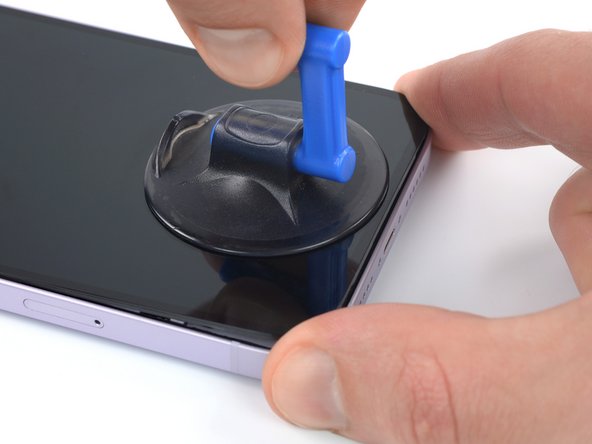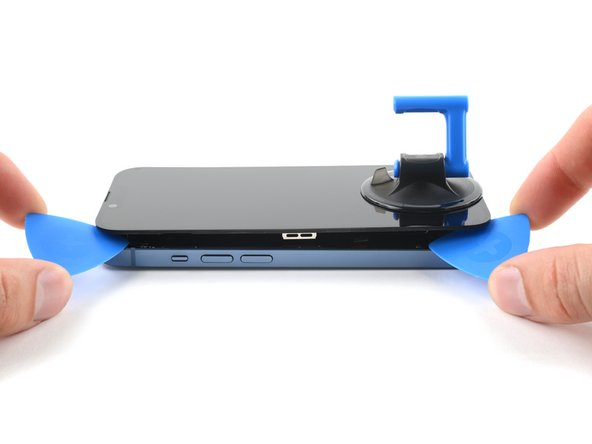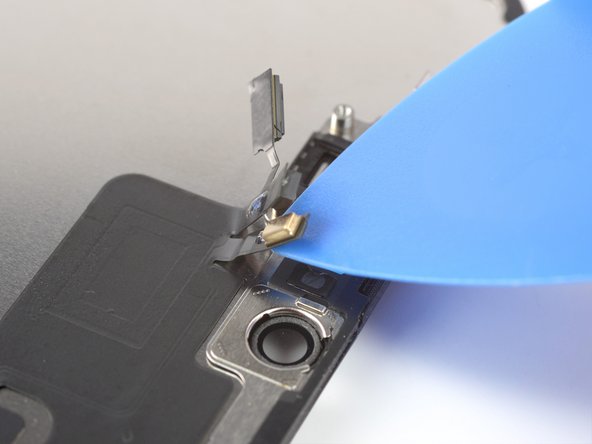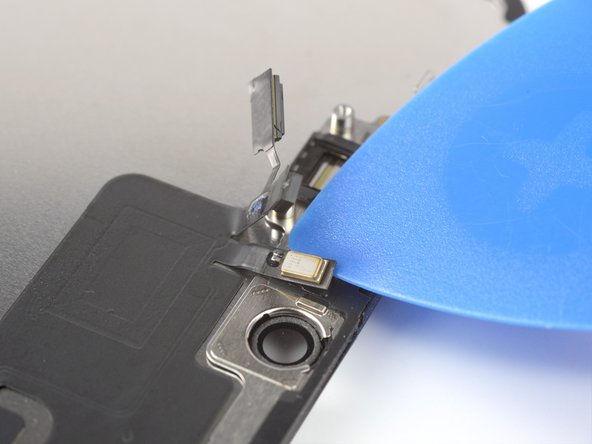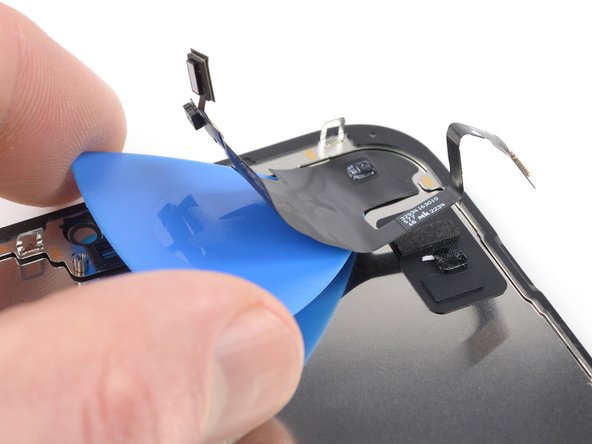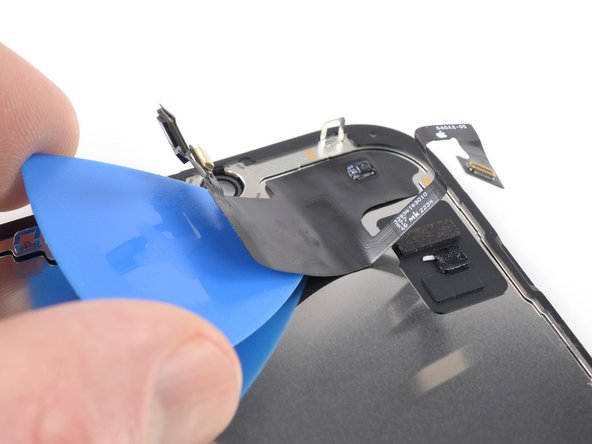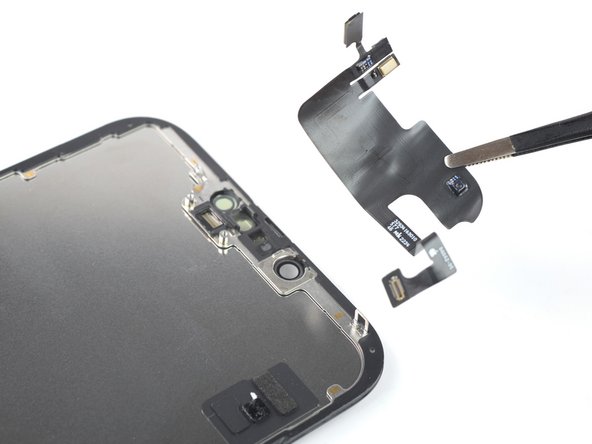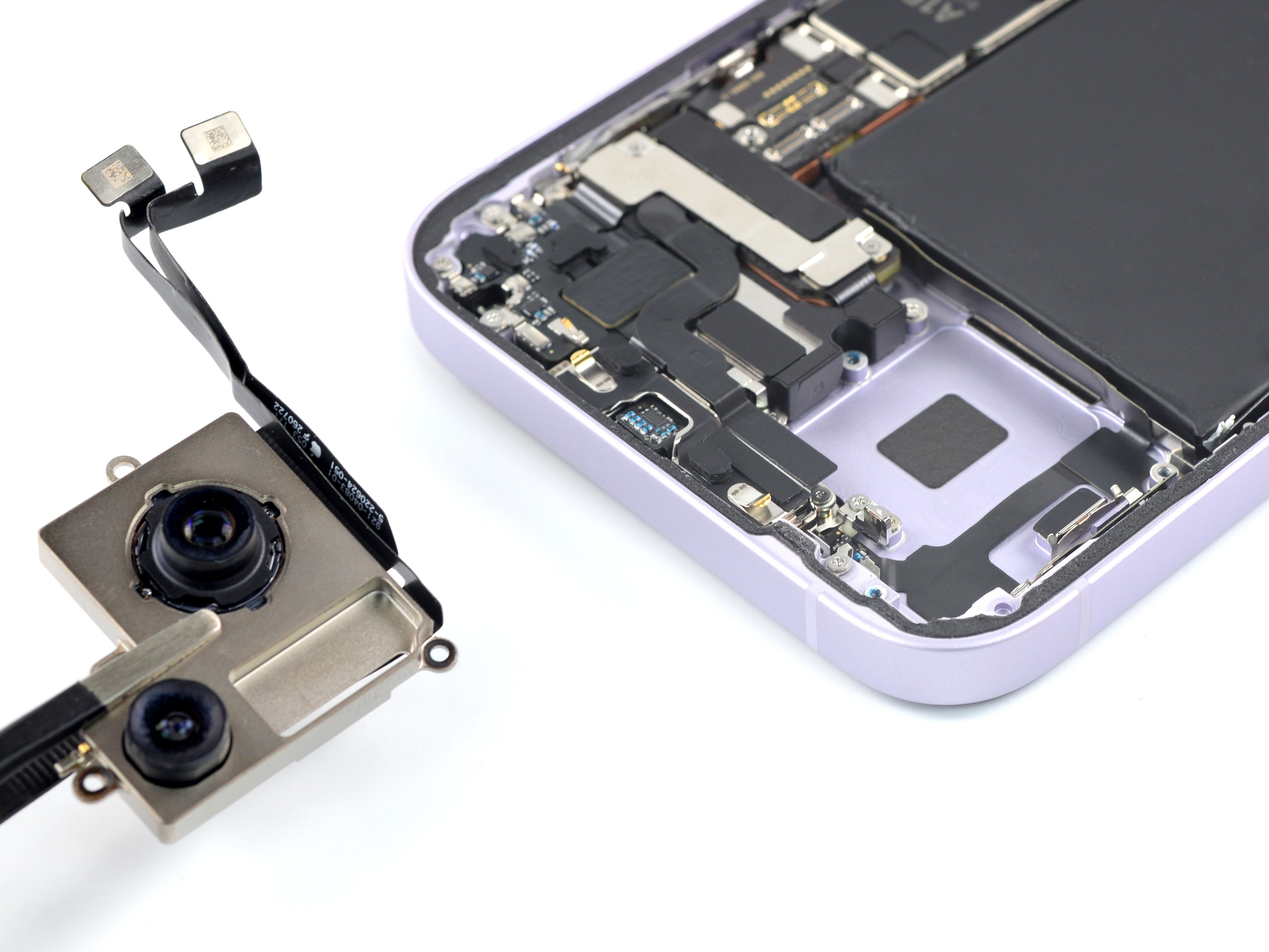iPhone 14 Plus Screen Replacement
Duration: 45 minutes
Steps: 29 Steps
Got a cracked, unresponsive, or blank screen on your iPhone 14 Plus? This guide will walk you through swapping in a brand-new display assembly to get your phone back in action. We based this on the A2886 (international) model, so if your iPhone 14 Plus is a different variant, things might look a bit different but the steps stay the same. Heads up: on iOS 17.6 and earlier, True Tone and auto brightness won’t work after replacing the screen, even with an original Apple part. Face ID will also be disabled unless you’re on iOS 15.2 or later. Starting with iOS 18, you can use Apple’s Repair Assistant to calibrate your new screen and bring back True Tone if you use a genuine Apple display. Don’t forget to grab some replacement adhesive to reseal your screen during reassembly. Your phone will work fine, but it probably won’t keep its IP (Ingress Protection) rating.
Step 1
- Make sure to power down your iPhone before taking it apart.
- Unscrew the two 6.8 mm-long pentalobe P2 screws located at the bottom edge of your iPhone.
Step 2
Pushing your opening pick in too deep can cause damage—let’s avoid that! Mark your pick to keep things safe and sound.
Feel free to mark the other corners of your pick with different measurements too, for extra control.
Or, get creative and tape a coin onto your pick about 3 mm from the tip to act as a handy depth stop.
- Mark the opening pick 3 mm from the tip using a permanent marker—precision is the name of the game!
Step 3
Pop on some safety glasses to keep your eyes safe from any sneaky glass bits that might break free during the repair.
Got a cracked screen on your iPhone? No worries! Just stick some tape over that glass to keep things from getting worse and to protect yourself while you work your magic.
If you're really in a pinch, feel free to superglue that suction cup right onto the screen. Sometimes you've got to get creative!
- Start by laying down some clear packing tape in overlapping strips across the iPhone's screen until the entire face is covered. It's like giving your phone a stylish new outfit!
- If the suction cup is being a bit stubborn in the following steps, take a sturdy piece of tape (duct tape works wonders!) and fold it into a handle. Use that to give the screen a gentle lift instead. You've got this!
Tools Used
Step 4
Keep your hair dryer on the move! Staying in one spot for too long is a no-go.
- Grab a hair dryer or heat gun and warm up the bottom edge of your iPhone for about 90 seconds, or until it feels just a touch too hot to keep your finger on.
Tools Used
Step 5
The adhesive keeping that screen snug as a bug is pretty tough! To make that first little gap, you’ll need to put in some effort. If it feels like a workout, don’t sweat it! Just add a bit more heat and gently wiggle that screen up and down to loosen things up until you’ve got enough space to slide in your tool. You’ve got this!
- Grab a suction cup and place it on the bottom edge of your phone—just steer clear of the very edge of that glass, okay?
- Now, gently pull up on that suction cup with steady pressure to create a tiny gap between the screen and the frame. You've got this!
- Next, slide an opening pick into that gap beneath the screen's plastic bezel. Easy peasy!
Tools Used
Step 6
- Grab your hair dryer and warm up the right side of your iPhone (the one with the power button) for about 90 seconds. You’re aiming for 'just a bit too hot to touch'—not 'lava', but definitely 'ooh, that’s toasty!'
Tools Used
Step 7
Be careful not to poke your pick in more than 3 mm; you don't want to accidentally tickle any sensitive internal parts!
- Carefully slide the opening pick around the bottom right corner of the iPhone to gently loosen the adhesive.
- Keep sliding the pick up the right edge of the iPhone until you reach the top right corner.
- Leave the pick tucked in at the top right corner before moving on to the next step.
Step 8
- Give your iPhone a little warm-up! Grab that hair dryer and aim it at the top edge of the iPhone for about 90 seconds, or until it’s just too toasty to touch. You want it nice and cozy to make the next steps a breeze!
Tools Used
Step 9
Keep your pick to a maximum of 3 mm—going deeper might poke the top sensors and cause trouble.
- Gently glide the opening pick around the top right corner of your iPhone to break free that stubborn top adhesive.
- Once you've made some progress, just let the pick chill in the top left corner while you carry on.
Step 10
- Grab your trusty hair dryer and give the left edge of your iPhone a warm hug for about 90 seconds, or until it feels just a smidge too hot to touch. You're doing great!
Tools Used
Step 11
Heads up! There are a couple of delicate cables hanging out along the left edge of your iPhone. Keep your pick away from this area to avoid giving those cables a bad day.
Step 12
Watch out! The cables hugging the left edge are super easy to nick with a pick. Take the alternate route here to carefully loosen the left adhesive instead.
Gently twist and turn to separate those stubborn parts!
If the adhesive is putting up a fight, give the left edge a little heat to loosen things up.
- Slide a second opening pick into the bottom left corner of your iPhone.
- Gently twist both picks at the same time until you hear that satisfying click of the left edge clips releasing.
Step 13
No stand nearby? Your suction handle can moonlight as a screen prop—handy and helpful!
- Detach your trusty suction handle from the screen.
- Turn your iPhone so that the right edge is facing you, like a little book ready to be opened.
- Gently lift the screen from the right side, swinging it up like the cover of a delightful book.
- Rest the screen against something sturdy to keep it upright while you tackle the inner workings of your phone.
- When it's time to put everything back together, position the screen carefully, align those clips along the top edge, and gently press the top edge into place before giving the rest of the screen a little snap down. If it’s being stubborn and doesn’t click easily, just check those clips around the perimeter to make sure they’re not bent out of shape.
Tools Used
Step 14
Keep a close eye on every single screw during this repair, making sure each one goes back to its original spot—this way your iPhone stays happy and unharmed.
- Grab your trusty Y000 screwdriver and let's get that 0.8 mm-long screw out of the way that's holding the display connector bracket in place. You've got this!
- Now, here's a pro tip: while you're putting everything back together, it's a great time to power up your iPhone and check that everything is working like a charm before sealing the screen back on. Just remember to turn your iPhone off completely before diving back into the repair!
Step 15
- Grab the screw hole end of the connector bracket using tweezers.
- Gently lift the bracket just enough to pop the latch on the opposite side loose.
- Carefully remove the display connector bracket.
- When putting it back, double-check that the bracket snaps into place correctly.
Tools Used
Step 16
To get those connectors back in action, gently line them up and give one side a little press until you hear that satisfying click. Then, do the same for the other side—easy peasy! Just remember, avoid pressing down in the middle. If things get out of line, those tiny pins can bend and that’s a one-way ticket to trouble. Keep it steady and you’ll be golden!
- Grab the pointy end of your spudger and gently lift the display cable connector straight up from its socket to disconnect it.
Tools Used
Step 17
- Grab your trusty Y000 screwdriver and go ahead and unscrew that 1 mm-long screw holding down the front sensor connector bracket. You've got this!
Step 18
- Grab the screw hole end of the connector bracket with your trusty tweezers.
- Gently lift the bracket a bit to free the latch on the opposite edge.
- Carefully take out the front sensor connector bracket.
- When putting everything back together, double-check that the bracket locks in place snugly.
Tools Used
Step 19
- Gently use the pointed end of your spudger to pop the front sensor cable free by lifting the connector straight up from its socket. You've got this!
Tools Used
Step 20
- Let's kick things off by gently taking off the screen.
- Once that's done, grab some isopropyl alcohol (90% or more) and clean the necessary areas before applying fresh adhesive where needed. A clean surface is a happy surface!
- If you're feeling ambitious and want to switch out the screen adhesives during reassembly, this is your moment to pause and do just that!
Step 21
Next up, we’ll show you how to move the front sensor assembly to your new screen. If your shiny new screen already has the assembly in place, you can skip ahead—no need to double up!
- Grab your Y000 screwdriver and take out the two 1.4 mm screws holding the sensor assembly bracket—easy does it!
Step 22
- Grab your tweezers or just use your fingers, and lift out the front sensor assembly bracket. Easy does it!
Tools Used
Step 23
You can use a hair dryer, heat gun, or hot plate to loosen things up, but go easy on the heat—your phone’s display is a bit sensitive and isn’t looking for a spa day!
- Warm up an iOpener and place it on the top edge of the screen for a cozy two minutes.
Tools Used
Step 24
- Slide an opening pick between the ambient light sensor and its cozy spot on the screen.
- Gently lift with the pick to pop the ambient light sensor free from the screen.
Step 25
- Slide an opening pick gently between the proximity sensor and its little nook on the screen.
- Carefully pry up with the pick to loosen the proximity sensor from the screen.
Step 26
- Gently coax the proximity sensor cable away from the screen using tweezers or your fingers. You've got this!
Tools Used
Step 27
- Slip that opening pick under the microphone cable, near the shiny metal rectangle—yep, that's your microphone.
- Gently work the pick around the microphone's edges to loosen up the adhesive. Go for a smooth perimeter sweep, like you're tracing a tiny racetrack.
Step 28
By now, the adhesive might have chilled out a bit. If that's the case, warm things up by applying a heated iOpener to the assembly for a minute before you dive back in.
- Slide an opening pick gently beneath the left edge of the front sensor assembly, like you're sneaking a peek at a surprise party.
- Carefully glide that pick beneath the assembly to coax it away from the frame. You're doing great!
Tools Used
Step 29
- Before sealing everything up, power on your device and give your repair a quick test run—better safe than sorry!
- To put things back together, just work your way through the steps in reverse. Easy does it.
- If you swapped out a part, iOS 18 users can calibrate it with Apple's Repair Assistant. Just update, head to Settings→General→About→Parts & Service History, tap Restart & Finish Repair, and follow the prompts.
- The slickest way to secure your new screen is with a sheet of custom-cut double-sided tape. Line it up, press it down, and you’re golden.
- Got leftover parts or old components? Drop them off at an R2 or e-Stewards certified recycler—Mother Earth will thank you.
- If your device is still acting out, try some basic troubleshooting, or pop over to our Answers community for tips. And if you need backup, you can always schedule a repair.
















